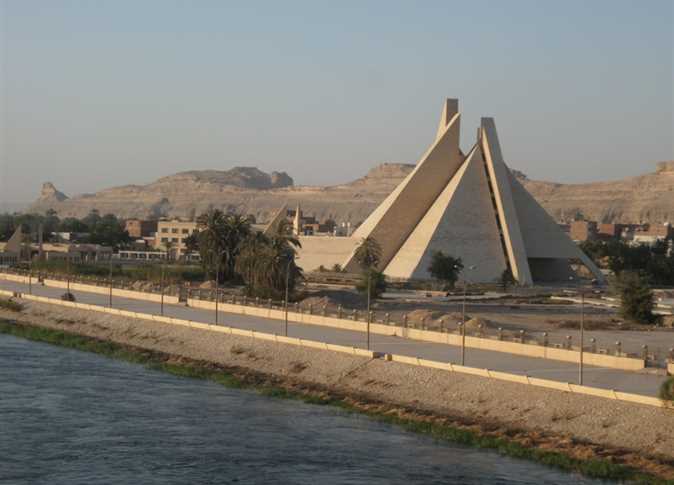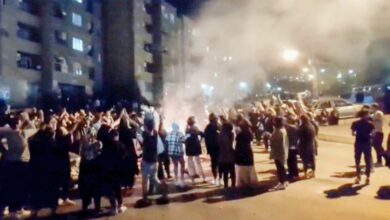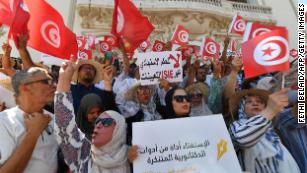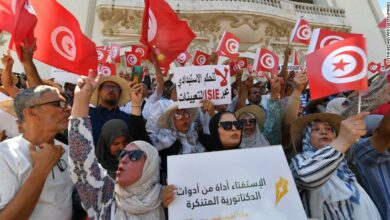
“I will speak Arabic.”
Those were Radwa Ashour’s first words for the keynote speech in the “Narrating the Arab Spring” conference, which started on Saturday at Cairo University, and will be held held over the next two days in collaboration with the Center for the Advanced Study of the Arab World and the Women and Memory Forum.
Though many of the foreign guests in the hall were familiar with Arabic in one way or another, they started to listen more carefully while small groups of volunteer simultaneous translators formed themselves in different corners of the semi-circle hall. Was it a sign of respect to Arabic, her mother tongue, or was it the hidden subaltern talking back to the empire and forcing it to seek translation?
Later during the day came Ashour’s answer: “I chose Arabic because I was a good critic in English, a better creative writer in Arabic.”
The lecture was another of her creative pieces. My mind started roaming to what she previously wrote about her own writing in “My Experience with Writing.”
“I was a woman,” she wrote. “The eye that sees and the perception that classifies and organizes the vocabulary of experience — both impose their different constraints, which are in turn reflected in the purport of the experience and the writing of it.”
That illuminated her lecture and arrangement of ideas in my mind — Ashour delivered the Egyptian revolution as she perceived/classified/organized it in images.
Previously, revolutions had to wait for months, even years to be told and shaped into stories or poems. Now, revolutions are instantly covered and documented in news and in images. The images seem to have the stronger effect.
Tunisia definitely provided the first image. The image of Mohamed Bouazizi burning himself and inflaming the region stopped Ashour to gaze. He was, like millions of Arab youths, dark-skinned, thin, poor, hopeless and symbolic. The second image was of a Tunisian old man who, though he wore a modern training suit, looked like a prophet coming out of the Old Testament. He walked a narrow dark street, damned the fleeting Ben Ali, hailed the martyrs and recited Abu Alkasem Alshabi’s important poem on freedom. The third image was of a Tunisian woman crying while talking on the phone right at the moment when a thrilling cry of joy came from a nearby balcony; pain and joy mixed.
Those images flew in the air of satellite channels and vibrated in internet connections, instantly inflaming revolution in Egyptian hearts and minds that were already under the weight of another image: Khaled Saeed’s. Egyptians had two images of Saeed, one as a handsome young man, and another of him after being beaten to death by heartless officers. The contrast between the two images was horrifying. Then the revolution came with its famous pictures. Ashour recalls the image of the heroic dance frenzy of Egyptian protesters at Tahrir Square when Mubarak’s helicopters were hovering above.
The protesters started shouting: “Hosni has gone mad … Hosni has gone mad … Condoleezza, Condoleezza, give Hosni a visa.”
Ashour sees that dance as a fabulous heroic act of turning fear into sarcasm and oppression into freedom.
The Tahrir Square’s beleelah seller is another important image for Ashour. The way he interweaved his revolutionary slogans while attracting attention to his merchandise (grains of peeled wheat in milk with sugar, nuts and raisins) is fascinating to her. “Jesus is a prophet, Moses is a prophet, Mohamed is a prophet. Let everyone place their peace and prayers on their prophets,” the seller would shout. “The beleelah carriage sends greetings to the Egyptian people. Our beleelah is with nuts, raisins and almonds."
The parallel state of the square, the smoothness of its daily details, the breathtaking mixture of political protest and the mawwalid (popular celebrations of the birthday of the Prophet, his family members and saints, where the streets host practically everything, from food and drink to entertainment, musical shows, barbers, dancing and sleeping places). Sticking posters and taking family picnic pictures was a fascinating show of how Egyptians assimilated the military tanks and cars when they ambivalently saw them on the streets for the first time in decades.
To Ashour, in this outstanding carnival-esque cultural confluence, Egyptians marvelously employed all their energy in service of the revolutionary act. This merge of an inherited culture together with a fundamental act for change is a new modernity that calls attention to itself.
Another aspect of cultural confluence is the inevitable mixture that took place between the youths of the middle class and those of the marginalized poor in the protests. The first had realized, after Khaled Saeed, that they were by no means far from the hands of the merciless police state. So they came to unite with the latter, the commonly crushed poor, in the square.
Here Ashour moved to her final image from the revolution testimonies. A famous blog, “The Poor First, Sons of Bitches!” by blogger Mohamed Abul Ghait, together with many others, drew her attention. The bloggers focused on the martyrs’ images, their poses, their smiles, their before-and-after pictures. Oddly enough, it has been repeatedly reported that during the days of the Mohamed Mahmoud Street clashes in November, many poor young men preferred to be on the front lines protecting the weak, or the better educated, the more enlightened others. They explained that the latter are better capable of leading a new free Egypt. They always fell first!
My head was now crowded with various images of familiar martyrs; they have become a cherished part of our daily lives. At this moment, her image, like words, indirectly posed the disturbing question: “If the one important life does not matter, what does?” Quoting Ursula K. Le Guin — another humane, creative American writer — Ashour ended the fascinating lecture by saying: “We either revenge them, or die like them.”
An enthusiastic female voice from the further end of the room came, shouting: “Down with the officers.”
“Narrating the Arab Spring” continues at Cairo University until 20 February. A complete program of events is available on their Facebook page.




